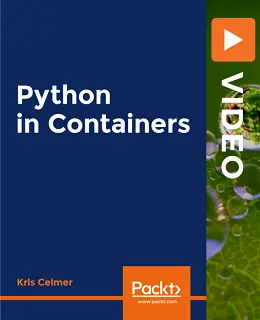Python in Containers [Video]

Python in Containers [Video]
English | MP4 | AVC 1920×1080 | AAC 44KHz 2ch | 23h 48m | 6.96 GB
eLearning | Skill level: All Levels
Python in Containers [Video]: All about containers, Docker, and Kubernetes for Python engineers
Docker and Kubernetes are must-have skills for Python engineers these days. Whether your focus is on machine learning and data science or you use Python as a general programming language, you must understand Docker and Kubernetes, as they form the basis of modern cloud-native applications built using microservice architectures.
- Build container images having Python applications and ship them to Docker Hub
- Run Jupyter Notebooks and create virtual machines in Docker
- Use Docker Desktop for Windows Pro and macOS and Docker Toolbox for Windows Home
- Create custom container images from scratch and automate container image builds with Dockerfile
- Design Flask and Django multi-container deployments and automate them with Docker Compose
- Containerize TensorFlow models into microservices and use Kubernetes with Minikube on a development host
- Deploy complex multi-container applications in Docker Swarm and Kubernetes
In this course, you’ll learn to do the following:
- Develop and explore machine learning, data science, and Jupyter Notebooks in Docker
- Run machine learning models in production with Kubernetes and Docker Swarm
- Package your Python code into containers
- Publish your containers in image registries
- Deploy containers to production, both in Docker and Kubernetes
- Build highly modular, container-based services in a microservices way
- Monitor and maintain containerized apps
You can use the course in two ways:
- If you use Python for machine learning and data science, go top-down – start with section 7 to quickly develop practical Docker skills and use sections 2 to 6 to delve deeper into specific container topics
- If you want to use Python for building web apps and microservices, try the bottom-up approach – use the course in a linear way